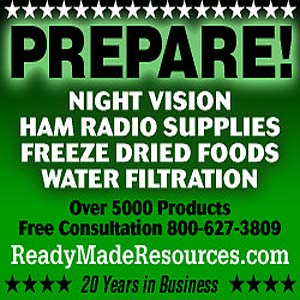4 First Steps To Successful SHTF Preparedness Planning

Take a look at these four top-level categories. They are among the first things to consider for SHTF preparedness planning.
I’m listing them in no particular order, because they’re all important. Water, Food, Security, Shelter.
We have discussed these categories many times on the blog. It never hurts to bring it up again. Especially for newbies.
Water
It is taken for granted. And for good reason. There’s always water coming out of the faucets. But given it’s importance for survival (just days to about a week till death without any), you best plan for it!
Nearby water sources
Identify your nearest external water sources. Where is the nearest pond, stream, river, lake, etc.? You simply will not survive a week without water (3-5 days?). Although it would take a very major disaster to actually shut-off your municipal water source (this article is focused on SHTF), your dependence should motivate you to have a backup plan.
Water transportation
Now that you know where the water is, you need to figure out how to collect and transport it to your home. Consider wagons, yard carts, and buckets with lids (sloshing?). Water weighs about 8-pounds per gallon. Plan for that. Also, depending on your surroundings and nearby population density, you may want to consider transporting when least likely noticed (if it’s SHTF time and security is of concern).
Water filtration and purification
Important! Procure systems of water filtration and methods of purification! Quality water filters. Also, always have a means to boil the water. Chlorine/regular-bleach or other methods of purification. Know the formulas for that.

Water storage
Containment vessels for fetching and transportation need to be manageable due to the weight. You might consider 5-gallon pails with gamma screw-on lids (splashing). Or purpose-designed water jugs. You might also think about getting yourself at least one 55-gallon food-grade barrel for water storage at home. Plan on at least 1 gallon of water usage per day per person (bare bones minimum!). Realistically you need more for cooking, sanitary, etc.
Food
What kinds of food
It is best to consider diversification of your food. Concentrate first on foods that you like, that you normally eat. And then move on to the other things. A mixture of canned, dehydrated, freeze-dried, MRE’s, bulk staples like rice & beans, jars, spices & condiments, on and on… diversify.
How much food
Short answer… As much as you’re comfortable with, given your risk-tolerance threshold.
In steps — 1 month — 3 months — 6 months — 1-year — 2-years? At some point, if it fits your lifestyle, you might consider increasing your food production self sufficiency. Baby steps first. Bigger steps later.
Short term and long term solutions
Your short term solution is simply your food storage. Your long term solution needs to include self-sufficiency – which means growing/raising your own food. This requires learning, practice, resources, time, and commitment.
Conceal your food
Unfortunately, having a storage of months (or more) of extra food has been ‘programmed’ by the mainstream to be taboo. Even though you know that you’re not a ‘wacko’, others may think so. And, if the SHTF and others happen to know you’ve got 6-months of food, guess who’s door they’re going to knock on? Maybe you don’t want that. So just keep this in mind when you’re stacking your food stuffs.
Security
Region, Town, Local Neighborhood >> risk assessment
Think about these three rings of proximity to your castle. Consider the general population density and the type of people who live there. Approximate your risk to a majority of them becoming desperate. Pay particular attention to your own local neighborhood. Some may be more conducive than others for banding together depending on the people who live there. Only you know who they are… or are not.
Evaluate your home, external and internal
Look at your overall home security from the perspective of someone else walking by on the street. Look for gaps in your readiness. Examine the inside of your home. Are your doors secure with deadbolts front and back? Do you have a plan for intrusion evasion? A safe room perhaps? There’s lots to think about…
Tactical and Escape planning
You must consider the reality of invasion. Think through scenarios whereby others are coming for your stuff. Where would they come from? Do you have a plan of evasion? What are your tactical plans if it were to escalate to that level?
Firearms practice and comfort level
Become proficient and comfortable with your firearms protection. Schedule more range time. Check your supplies. This is our ultimate protection, which we hope we will never need to use in that way. But you best be prepared in the event that you need to…

Your “Shelter” (home) and/or Bug-out location
Have a plan with multiple destinations
There may be circumstances which will require that you bug-out for your own well-being. You need to think-it-through well ahead of time and have a plan of action and a destination (destinations).
Understand the post-disaster security timeline
There will be a window of opportunity in which you will probably be able to beat the crowd, so to speak, before they realize that the $hit has hit the fan. Use it.
Plan ahead for supply and resupply
If you are forced to bug-out, you better understand that you will be leaving lots of your supply behind at home. So you better have a plan for resupply elsewhere. There are many ways to deal with this, but you need to think about it, and plan for it.
I originally wrote this article during the early days of Modern Survival Blog (though I just tweaked it a bit for better presentation). I still like its content which I feel remains valid to this day. There are plenty of opportunities where I could have inserted a zillion links to other articles here related to the subject matter above. But instead I simply recommend that you use my Search function in the menu area up top, if you’re interested to consume more.
